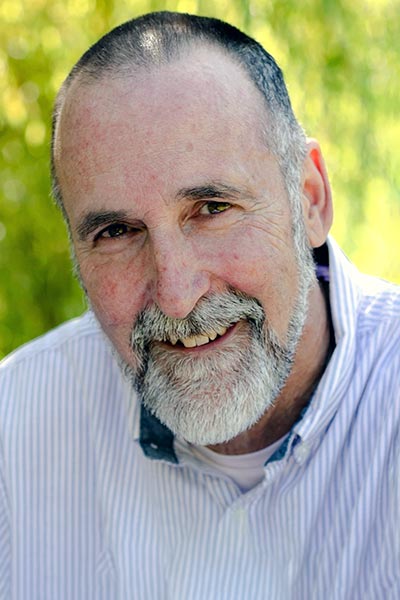Exercise is medicine. It is an important part of improving health outcomes for lung cancer patients.

Indeed, the results of a postdiagnosis exercise analysis support this. Researchers found the median overall survival difference was striking between the groups—19 years overall survival for exercisers versus 14 years overall survival for non-exercisers. The survival difference appears within 5 years and persists at least 20 years after diagnosis.1
Before my diagnosis, I walked 10 to 12 kilometers a day. Fortunately for me, as I recovered from my initial chemo-radiation for tumors in my chest, walking still felt good. I did not need a “prescription” from my doctor to get moving again. However, I could only manage up to seven kilometers a day. Despite regular exercise, I wasn’t regaining my previous fitness levels.
And then I attended a cancer mentor training meeting that would change my approach to fitness during my cancer journey. There I met breast cancer patients who ran. They told me about the “dragon boat phenomenon,” and how—through dragon boat racing—breast cancer patients challenged the notion that vigorous exercise was dangerous. Indeed, evidence shows that resistance exercise such as dragon boat racing is not only safe for women recovering from breast cancer treatment, it improves their health and builds camaraderie.2
Inspired by these running cancer survivors and with a recommendation from a friend who runs, I then read “Born to Run” by Christopher McDougall. The book describes the joys of barefoot and endurance running. As I finished the book, another friend suggested I try the “Couch to 5K” running challenge, a program designed to gradually increase one’s endurance so one can run a 5K. I was determined to rebuild my fitness. However, I had never run or jogged in my life, so a slow, gradual start seemed prudent. I set a goal to run in a cancer organization fundraising 5K run.
With that goal in place, I took the first step—talking to my doctor. Mine was skeptical but saw no obvious reason not to try more vigorous exercise in my quest to regain my previous fitness level. I am proud to say that despite being in treatment again, I am still running three times a week as my main form of exercise.
When you are in treatment, very little feels like it is within your control. The medication will work, or it won’t. All you can do is take it. With exercising, however, something is within your control. From the endorphins you get to the stimulation of the immune system that occurs with regular exercise, there are wide-ranging benefits.
For me, the mental health benefits are perhaps most important. I feel empowered when I exercise. My mood improves. But the benefits don’t stop there. Exercise helps also helps reduce fatigue and maintain physical strength. The science on the benefits of exercise for lung cancer patients is robust.
Indeed, the pan-cancer analysis of postdiagnosis exercise and mortality previously mentioned revealed several important findings.1 As the study’s accompanying editorial succinctly states: “This [study] underscores that exercise (in addition to standard therapies) is one of the best daily pills cancer survivors can take to optimize their longevity.”3 As I’ve said, exercise is medicine, and more doctors and oncologists should prescribe it.
The study defined “exercisers” as those who met the Physical Activity Guidelines for Americans, which states for “substantial health benefits, adults should do at least 150-300 minutes a week of moderate-intensity or 75-150 minutes a week of vigorous-intensity aerobic physical activity.” Only about a third of patients in the analysis met this guideline.
A recently published ASCO Guideline—Management of Fatigue in Adult Survivors of Cancer—recommends aerobic exercise as the best way to reduce fatigue during and following treatment.4 These guidelines were produced after a literature review of 113 randomized controlled trials (RCTs) from the past 10 years.
On a day when fatigue is great, the challenge of tying on running shoes and stepping out the door to run is high. For me, the confidence that comes as the kilometers add up is the antidote to this problem.
Beyond fatigue, there are many other barriers to exercise for individuals with cancer. Fortunately, there is often a way to overcome the barriers one might face. For example, I have had some running injuries. Luckily, the most severe was a mildly stretched Achilles tendon when I tried to increase the length of my runs from 5 to 10 kilometers. I backed away from that ambitious goal and learned the importance of warming up, which helped. I also fell on my face one day after tripping over a crack in the sidewalk. I broke my nose. Again. I learned to be a bit more careful where I put my feet; I also added some specific balance exercises to my routine.
My tumor progressed recently, and while I waited for my treatment to be scheduled, I went for a run—the kind fellow runners would recognize as a bad run. About 4 kilometers in, I started coughing, and I could not stop. My confidence was badly shaken, and I wondered if this is what the end was going to look like. Doctors warned me that the loss of function could be one of the biggest challenges at end-of-life. But I’m not there yet, so I will keep going.
The next time out, I told myself I was going to do what I could. There were several places where I could cut the run short, if needed. I had been working to a goal of a faster time for my 5K, and I let that go. For me, it is more important to keep running than to set a personal best time. So I ran. The feeling of accomplishment when I finished was a fantastic boost.
Lung cancer patients and survivors can exercise vigorously. Running may not be everyone’s exercise of choice. However, there are many options for physical activity that suit a variety of abilities and preferences. Exercise is a valuable tool in the journey toward better health and well-being despite the challenges one may face.
See you out running or walking.
References
- 1. Lavery JA, Boutros PC, Scott JM, Tammela T, Moskowitz CS, Jones LW. Pan-Cancer Analysis of Postdiagnosis Exercise and Mortality. J Clin Oncol. 2023;41(32):4982-4992. doi:10.1200/JCO.23.00058
- 2. Harris SR. “We’re All in the Same Boat”: A Review of the Benefits of Dragon Boat Racing for Women Living with Breast Cancer. Evid Based Complement Alternat Med. 2012;2012:167651. doi:10.1155/2012/167651
- 3. Kenfield SA, Chan JM. Meeting Exercise Recommendations Is Beneficial for Cancer Survivors. J Clin Oncol. 2023;41(32):4965-4967. doi:10.1200/JCO.23.01528
- 4. Julienne E. Bower et al. Management of Fatigue in Adult Survivors of Cancer: ASCO–Society for Integrative Oncology Guideline Update. JCO 0, JCO.24.00541 DOI:10.1200/JCO.24.00541





